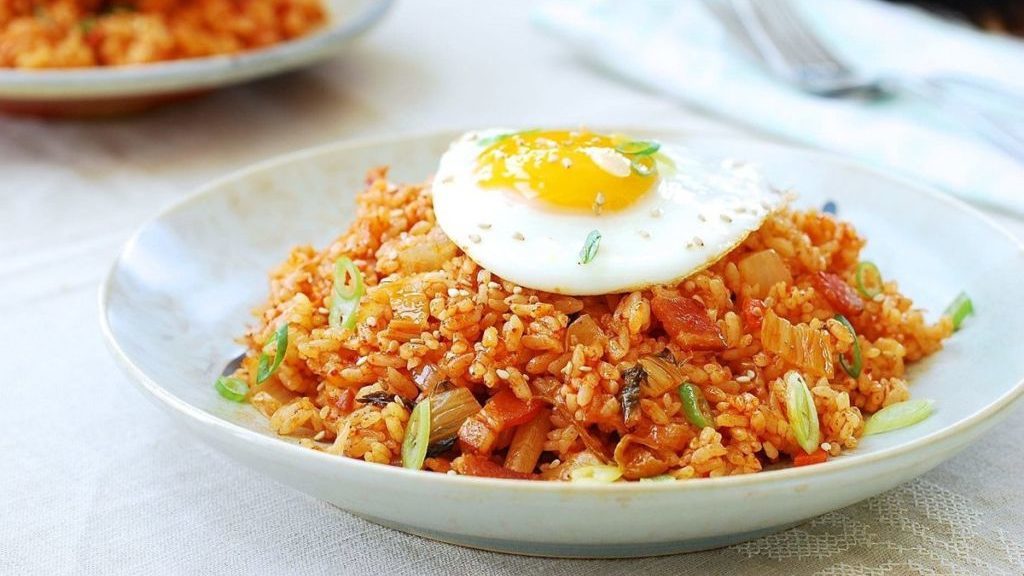Fried rice is one of the typical dishes you can find in many Asian households. As with its name, cooked rice is added with some chopped garnishes such as vegetables, meat and a beaten egg to be fried in a large wok with oil. Not only does fried rice fill your tummies, but they also satisfy your tastebuds as well.
History of Fried Rice
While there are no exact origins regarding fried rice, it has always been thought that the fried rice was invented during the Sui dynasty (A.D. 589–618), in the city of Yangzhou in eastern Jiangsu province.
As named after the city of which it was born, Yangchow or Yangzhou fried rice is still the standard for all Chinese fried rice. Piping hot morsels of rice tossed with garnishes such as peas, scallions, prawns, roast pork and eggs.
Today, fried rice dishes are found throughout most Asian countries, where rice grains are the main staple. Different states have different names for their version of fried rice such as nasi goreng (Malaysia, Indonesia), Bokkeumbap (Korea), Khao phat (Thailand) and many more.
Bokkeumbap (볶음밥) is Korean fried rice. It was never known how the great dish reached the Land of the Morning Calm, but Koreans have their very own version of fried rice too. One of the most popular fried rice is Kimchi Bokkeumbap (김치볶음밥) or Kimchi Fried Rice.
Kimchi Love
Kimchi, kimchi, kimchi! As one of the main staples in Korean households, it is no wonder that hundreds of kimchi dishes can be made with just one super ingredient. The salted and sour bursts of flavour from fermented kimchi are what make kimchi unique to taste.
Which is also why kimchi is added to every dish in Korea be it the main ingredient or as a side dish. As to why kimchi has become an integrated part of the Korean’s life, it is all because of the past.
When ingredients such as crops were scarce in the winter, kimchi was fermented in large earthenware in big batches to allow the people to have at least some food to eat in the cold. A handful of kimchi would be taken out of the earthenware on the winter days, and delicious cuisines can be whipped up with it.
For instance, the kimchi-jiggae is a kimchi-bases stew that can warm up stomachs in the cold winter days. With a large part of kimchi intertwined with history, kimchi is where it stands today in the lives of the Korean people.
Kimchi + Fried Rice = WOW
As mentioned above, kimchi is an ingredient that can create limitless dishes. This is why the Kimchi Bokkeumbap is no exception. As opposed to freshly cooked rice being used in certain fried rice, chilled overnight rice is more commonly used in the Kimchi Bokkeumbap with overly riped kimchi.
It is not what people may call – a dish full of fresh ingredients. Some people may like it plain with just two ingredients, while others may add in diced ingredients such as spam, roast pork, chicken, beef and prawns.
There is no fixed recipe to the Kimchi Bokkeumbap. Like its Chinese counterparts, fried rice is reinvented regularly based on the ingredients available and depending on a person’s preferences.
It is a relatively simple dish with simple ingredients. Restaurants have made the Kimchi Bokkeumbap more colourful with a sunny side egg on the top of the rice or even topped with melted cheese to further enhance the flavour. Cheese can be added to anything these days!
Where to find the Kimchi Bokkeumbap?
Nevertheless, give a try on the Kimchi Bokkeumbap! Check out Oiso Korean Restaurant, Pung Kyung and Eat Seoul Korean Street Food for authentic Kimchi Bokkeumbap. You will love it and be hungry for more! Find out more about Korean cuisine on foodpanda.
